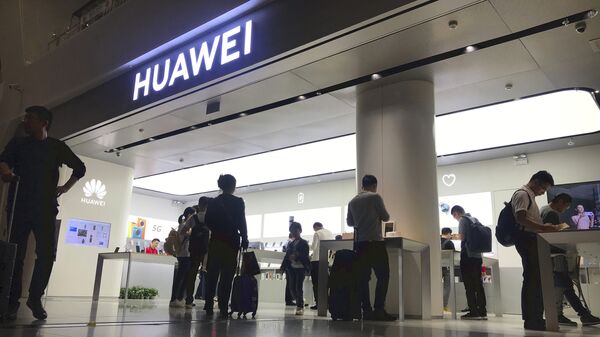Chinese telecoms manufacturer Huawei expects to see smartphone sales drop by up to 20 percent in 2020, with the decline expected to be the first-ever year-on-year drop in the company’s history, US-based outlet The Information has reported, citing sources said to be familiar with the situation.
According to the outlet, the company expects sales to drop from over 240 million units sold last year to approximately 190-200 million units in 2020. The decline is expected to come about as a result of two factors: a) US restrictions banning Huawei from shipping Google-supported Android phones and b) concerns stemming from COVID-19, the new coronavirus which has hit the Chinese manufacturing and retail sectors in recent weeks. People said to be familiar with these projections said the US restrictions were the main factor.
The Information says these figures are based on an internal projection said to have been shared among company managers in January. Huawei itself has yet to comment on the veracity of the outlet’s reporting.
According to Engadget, the decline may be accounted for by the typical annual cycle in which new phone models become available, with Huawei able to get around the US restrictions through 2019 with its P30 Pro models, which still featured Google’s Android operating system, but will be unable to do so with the P40 Pro, set to be unveiled in late March.
Record Sales in 2019
Huawei’s smartphone division enjoyed a banner year in 2019, notwithstanding US pressure. This included a 16.8 percent year-on-year jump in smartphone sales, enabling the company to win the second-largest share of the global smartphone market after Samsung. Huawei’s computer, wearables and wireless audio devices saw growth in sales of between 170 and 200 percent during the same period.
Other sectors, including the company’s 5G infrastructure division, were similarly left apparently unscathed by US pressure, with the UK and other European countries announcing that they would continue to do business with the Chinese company notwithstanding US pressure against using the Chinese company’s technologies amid espionage concerns.
Google Reportedly Wants Partnership Restored
Last week, XDA Developers reported that Huawei was working on a possible “Google-killing” mobile search app. Earlier, the company unveiled its new home-grown operating system, HarmonyOS. In February, Reuters reported that Chinese companies including Huawei, Xiaomi, Oppo and Vivo had teamed up to create a ‘Global Developer Service Alliance’ to take on Google in the software sector. These companies accounted for over 40 percent of the global mobile phone sector in 2019, and over 77 percent of the Chinese market. Also last month, German media reported that Google had applied for a US government license to resume business ties with Huawei.
The US government moved to blacklist Huawei in May 2019, but introduced special licenses for US firms doing business with the Chinese giant amid fears of multibillion-dollar losses. Companies including Intel and Microsoft have taken advantage of these exemptions, which have been continually renewed in the months since.
Huawei was one of multiple companies to be caught up in the massive trade war between China and the US, which kicked off in 2018 after the Trump administration slapped tariffs on $25 billion-worth of Chinese goods. The two countries signed a phase one trade deal in January, which committed China to buying some $200 billion worth of US goods over the next two years. However, Chinese goods will continue to face US restrictions until a phase two deal can be signed.



